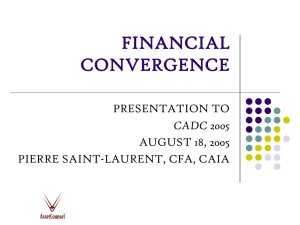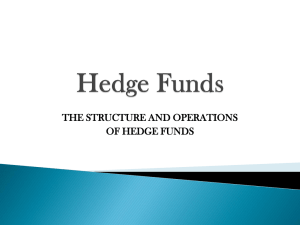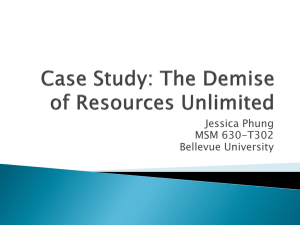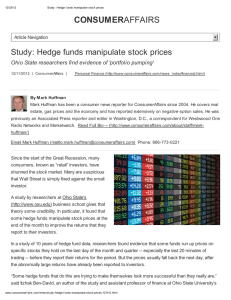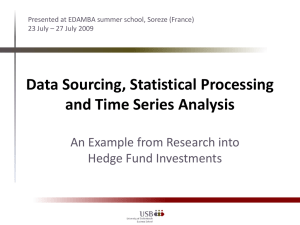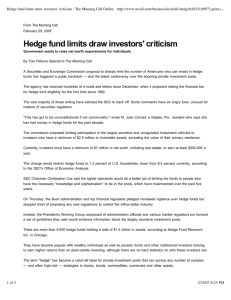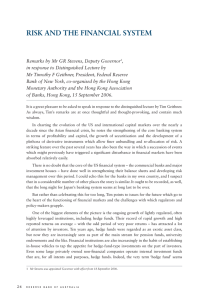Credit Hedge Fund to Launch – SCI Article
advertisement
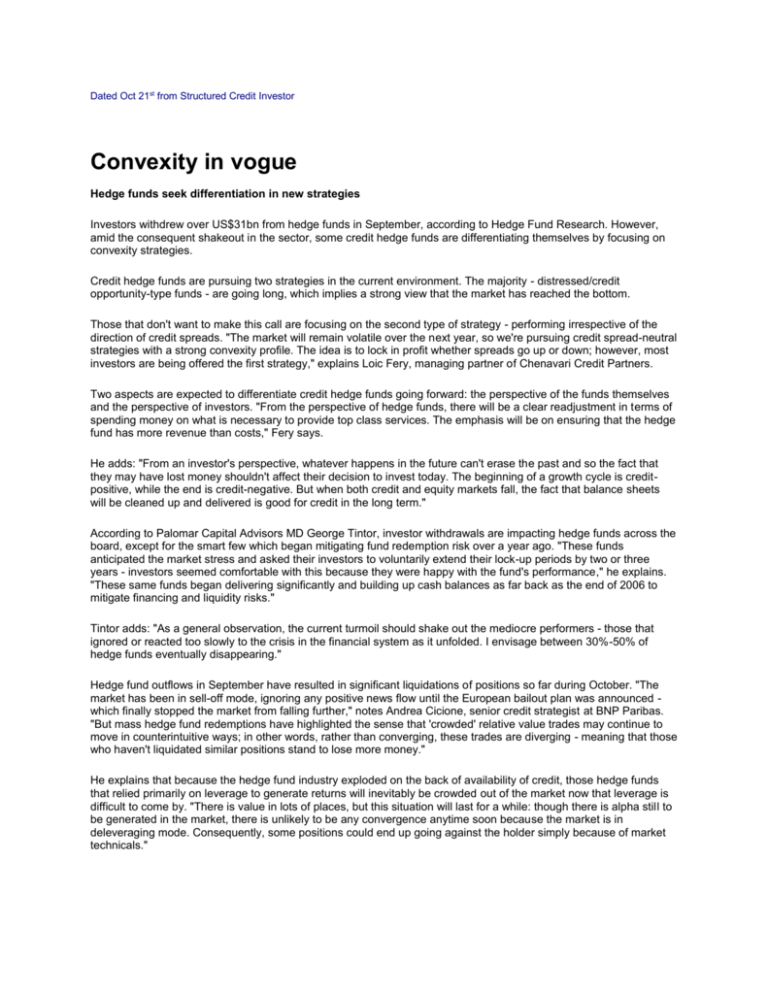
Dated Oct 21st from Structured Credit Investor Convexity in vogue Hedge funds seek differentiation in new strategies Investors withdrew over US$31bn from hedge funds in September, according to Hedge Fund Research. However, amid the consequent shakeout in the sector, some credit hedge funds are differentiating themselves by focusing on convexity strategies. Credit hedge funds are pursuing two strategies in the current environment. The majority - distressed/credit opportunity-type funds - are going long, which implies a strong view that the market has reached the bottom. Those that don't want to make this call are focusing on the second type of strategy - performing irrespective of the direction of credit spreads. "The market will remain volatile over the next year, so we're pursuing credit spread-neutral strategies with a strong convexity profile. The idea is to lock in profit whether spreads go up or down; however, most investors are being offered the first strategy," explains Loic Fery, managing partner of Chenavari Credit Partners. Two aspects are expected to differentiate credit hedge funds going forward: the perspective of the funds themselves and the perspective of investors. "From the perspective of hedge funds, there will be a clear readjustment in terms of spending money on what is necessary to provide top class services. The emphasis will be on ensuring that the hedge fund has more revenue than costs," Fery says. He adds: "From an investor's perspective, whatever happens in the future can't erase the past and so the fact that they may have lost money shouldn't affect their decision to invest today. The beginning of a growth cycle is creditpositive, while the end is credit-negative. But when both credit and equity markets fall, the fact that balance sheets will be cleaned up and delivered is good for credit in the long term." According to Palomar Capital Advisors MD George Tintor, investor withdrawals are impacting hedge funds across the board, except for the smart few which began mitigating fund redemption risk over a year ago. "These funds anticipated the market stress and asked their investors to voluntarily extend their lock-up periods by two or three years - investors seemed comfortable with this because they were happy with the fund's performance," he explains. "These same funds began delivering significantly and building up cash balances as far back as the end of 2006 to mitigate financing and liquidity risks." Tintor adds: "As a general observation, the current turmoil should shake out the mediocre performers - those that ignored or reacted too slowly to the crisis in the financial system as it unfolded. I envisage between 30%-50% of hedge funds eventually disappearing." Hedge fund outflows in September have resulted in significant liquidations of positions so far during October. "The market has been in sell-off mode, ignoring any positive news flow until the European bailout plan was announced which finally stopped the market from falling further," notes Andrea Cicione, senior credit strategist at BNP Paribas. "But mass hedge fund redemptions have highlighted the sense that 'crowded' relative value trades may continue to move in counterintuitive ways; in other words, rather than converging, these trades are diverging - meaning that those who haven't liquidated similar positions stand to lose more money." He explains that because the hedge fund industry exploded on the back of availability of credit, those hedge funds that relied primarily on leverage to generate returns will inevitably be crowded out of the market now that leverage is difficult to come by. "There is value in lots of places, but this situation will last for a while: though there is alpha still to be generated in the market, there is unlikely to be any convergence anytime soon because the market is in deleveraging mode. Consequently, some positions could end up going against the holder simply because of market technicals."




